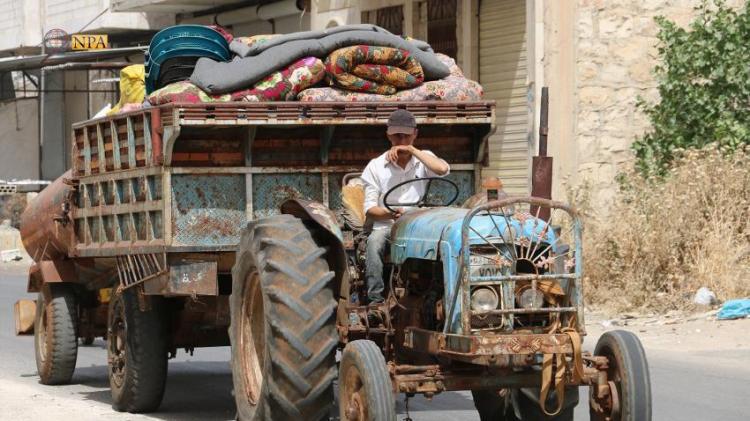Response Coordinators: Tens of destroyed facilities, hundreds of thousands of IDPs in the latest escalation in Idlib
Idlib – North-Press Agency
Our statics are higher than the United Nations, because of different documentation methods.
The manager of the Syria Response Coordinators team noted that the difference between the team’s statistics and United Nations statistics is that the latter is late in registering the out-of-service facilities, while the team of Response Coordinators relies on immediate registration.
In an interview with North-Press on the veracity of the speech by Mark Lowcock, UN humanitarian and Emergency Relief Coordinator at the last UN Security Council session on Idlib, where 37 schools were damaged during the recent escalation since late April due to the shelling of the Syrian government forces.
Muhamad Hallaj, the manager of the Syrian Response Coordinators Team said that the difference between the response coordinators’ documentation and the United Nations is that the latter does not consider the building to be out of service if it’s not completely destroyed.
Hallaj explained that the team’s work is based on continuous monitoring of damage to schools and vital centers through the fieldwork teams, and confirmed the teams’ documentation of 72 facilities were targeted in the recent military campaign.
Hallaj pointed out the method of documentation followed by the team, which is based on counting direct damage in schools, whether direct or indirect, in terms of accumulated damage.
Concerning Mark Lowcock talk in the Security Council on health facilities, Hallaj confirmed that they documented the destruction of (57) medical facilities and hospitals in the de-escalation zones, while the World Health Organization declared that only 26 health facilities were destroyed.
He added that the second point of the variance of statics numbers is that United Nations partners are late in publishing their reports due to delays in the registration of the out-of-service facilities, while the team of response coordinators relies on direct registration by its on-ground teams in northern Syria.
He also said that teams in all regions are “Recording the targeting with high accuracy by specifying time and place with attached pictures of the targeted facilities, and assessing the damage and its value and cost in order to provide support to repair these damaged facilities after the end of the bombing”.
The manager of the Syria Response Coordinators team added that they counted more than 500,000 internally displaced people while the United Nations reported only 300,000.
Mr. Hallaj mentions that the reasons of the disparity are due to a different working mechanism between his team and the United Nations, he said; “The team of response coordinators counts the numbers accurately and coordinately through purely statistical work.”
He pointed out that the United Nations takes statistics to provide aid and food aid through the partners who work with it because there are no offices there, who intend to limit the number of IDPs to the aid provided only to them, which causes a large discrepancy in the recorded numbers.”
The Response Coordinators is a statistical team that aims to record the daily events and the statistics, and the documentation of destroyed medical, educational and industrial facilities inside the de-escalation zones in north-west Syria.

